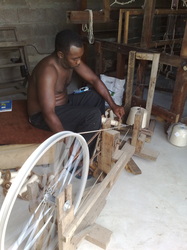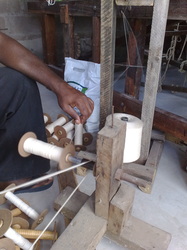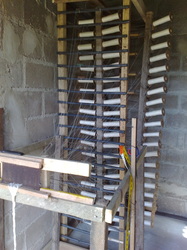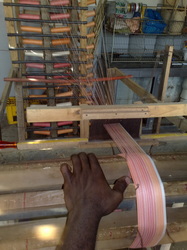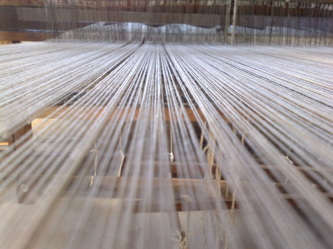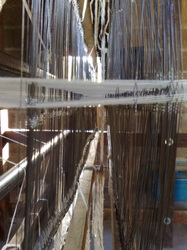Preparation of the Warp sheet
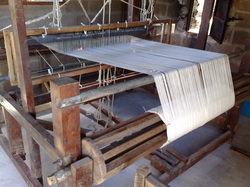
Firstly - we need to create a "beam" that will be the "base" for the kikoi (known as the warp sheet). Here the weaver plan the colours, patterns and width of the material that will be produced. Depending on the loom that is used, the width can vary from a few centimeters up to a couple of meters. The length depends on how many pieces that need to be produced - we usually prepare a 100 meters.
Part of the preparation include some spider web tricks - yarn get transfered from the main bobbins onto smaller bobbins which controls the tention on the yarn as well as making it easier to arrange the colours. We use a total of 60 bobbins to create one section on the beam. (one section = 1 inch) Thus, the beam are buildt up inch by inch.
Part of the preparation include some spider web tricks - yarn get transfered from the main bobbins onto smaller bobbins which controls the tention on the yarn as well as making it easier to arrange the colours. We use a total of 60 bobbins to create one section on the beam. (one section = 1 inch) Thus, the beam are buildt up inch by inch.
From the beam to the machine
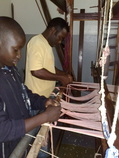
Once the beam is finished (normally a 2 day job), the beam gets transferred onto the loom where the yarns get pulled through one be one. Sometimes, up to 2,000 threads
These then go through the separation needles, then through the reed.
The separation needles move the threads up or down during the weaving process.
The reed is the important part of spacing the yarn. There are many different "sizes" of reeds, we use 25", 45" and 65" - meaning the amount of threads per inch.
Once all is in place, the warp sheet is ready and now you can start playing with the weft sheet. ( A left/right action creating the weave)
These then go through the separation needles, then through the reed.
The separation needles move the threads up or down during the weaving process.
The reed is the important part of spacing the yarn. There are many different "sizes" of reeds, we use 25", 45" and 65" - meaning the amount of threads per inch.
Once all is in place, the warp sheet is ready and now you can start playing with the weft sheet. ( A left/right action creating the weave)
